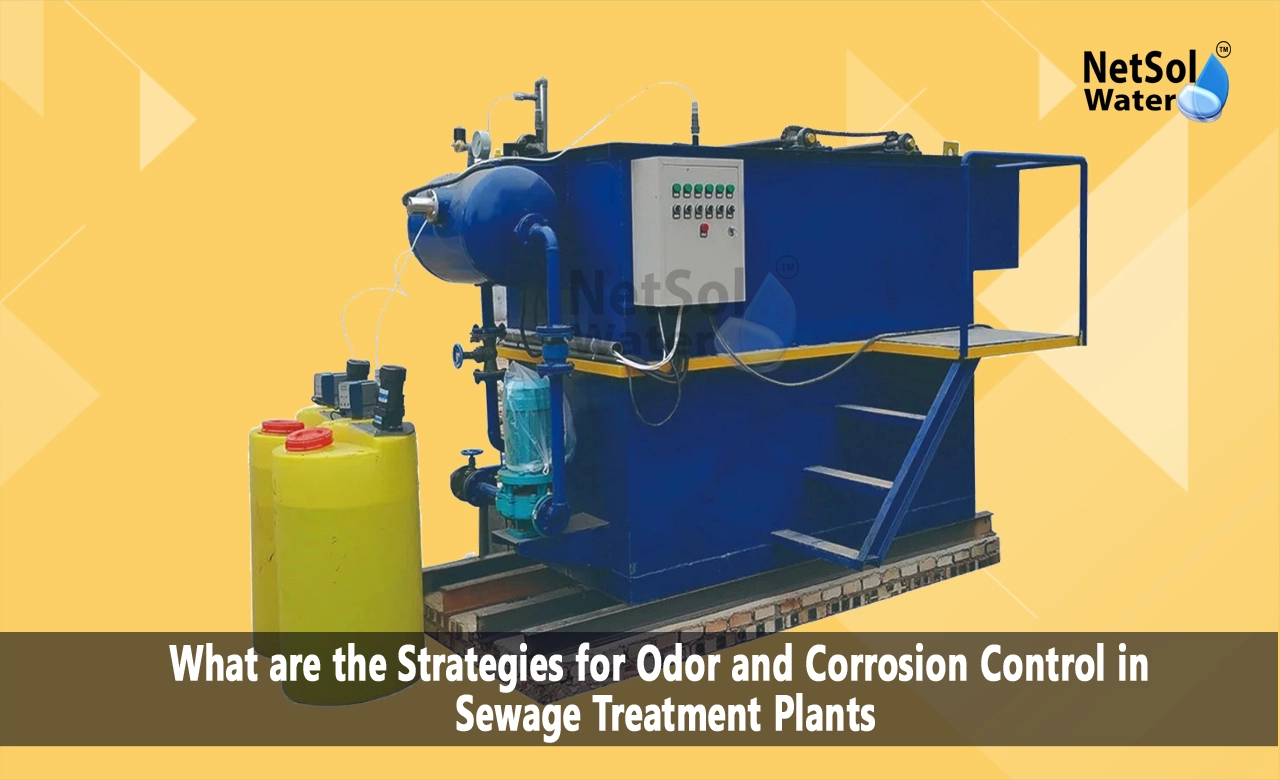What are the Strategies for Odor and Corrosion Control in STP Plants?
Sewage treatment plants are important for protecting public health and the environment by treating municipal wastewater before it's discharged or reused. However, sewage processing can cause problems if not managed properly. Two common problems are odour and corrosion. Foul odours, like hydrogen sulfide, ammonia, and organic sulfur compounds, come from biological processes and cause complaints, regulatory action, and safety concerns for workers. The humid and harsh conditions inside treatment plants cause tanks, pipes, and equipment to corrode quickly, leading to significant damage and costly repairs. It's important to manage these problems carefully to keep the treatment plants running smoothly.
Sewage treatment plants can suffer from odours and corrosion if left unattended, which can cause operational inefficiency and require costly repairs and infrastructure replacements. Fortunately, there are many strategies for odour control and asset protection that can create a healthier, safer and more sustainable environment for sewage treatment. This blog will examine the key solutions that plants use to manage these challenges.
Biological Air Treatment Systems
Since sewage treatment inherently generates odorous compounds via anaerobic digestion and decomposition, source capture and treatment are critical. Many plants utilise biological air treatment systems like bioscrubbers and biofilters to control odour emissions from covered sources like sludge handling and headworks areas. In these systems, foul air is routed through media beds harbouring specialised microorganisms that metabolise and break down malodorous compounds before release. Bioscrubbers use an inorganic packing material kept moist for microbes, while biofilters contain organic media like soil, compost or peat. These biological treatment approaches are cost-effective alternatives to chemical scrubbing or carbon adsorption systems.
Chemical Oxidation & Precipitation
For waste streams containing concentrated odorants like hydrogen sulfide or organic sulfur compounds, proven chemical oxidation methods effectively neutralise the problem at its source. Solutions like chlorine, hydrogen peroxide, potassium permanganate or ozone rapidly react and oxidise malodorous compounds into less objectionable byproducts. Oxidation is sometimes coupled with precipitation agents like ferric chloride or alum salts, too. These coagulants sequester odorous compounds via precipitation reactions, forming solids that can then be settled or filtered out from the bulk water flow. Chemical oxidation prevents odours from volatilising downstream, while precipitation provides additional abatement.
Alkaline Supplement & pH Control
Since hydrogen sulfide and other odorous reduced sulfur emissions proliferate under acidic conditions, monitoring and adjusting pH levels is crucial. Sewage plants carefully dose alkaline supplements like caustic soda, lime slurry or magnesium hydroxide to raise pH into basic ranges that inhibit acid-induced sulfide generation.
Beyond neutralising acidity to constrain gaseous emissions, pH control protects concrete and metal assets from accelerated corrosion damage stemming from acidic conditions, too. It ensures biological processes operate optimally within their preferred pH windows as well.
Ventilation & Air Dispersion
While optimised ventilation design doesn't eliminate odours themselves, proper airflow management minimises stagnation where concentrated gases accumulate and vent noxious fumes away from potential receptors. Many sewage plants thoughtfully situate exhaust stacks, fans and air intake louvres to maximise atmospheric dispersion of odorous emissions.
Air dispersion modelling analyses local meteorological data, topography, and nearby facilities to optimise stack height and exhaust velocity and rapidly dilute fumes to acceptable levels. Wind fences and guiding structures near odour sources like clarifiers enhance air mixing to reduce gas buildup, too. When properly implemented, strategic ventilation prevents stagnant odorous pockets from forming.
Asset Hardening & Corrosion Mitigation
Despite odour controls, some hydrogen sulfide and other noxious compounds inevitably come into contact with plant infrastructure like tanks, pipes and machinery. To prolong asset life, sewage facilities implement corrosion mitigation strategies like protective coatings, liners, cathodic protection systems and material selection.Surfaces are prepared and coated with epoxy, UV-resistant polyurethane and other special paints formulated to resist chemical attack over many years. Fiberglass-reinforced plastic (FRP) liners or sheets of chemically inert HDPE provide additional barriers. Some plants invest in upgrading tanks and piping to higher corrosion-resistant alloys, too. These defensive hardening measures buy decades of additional service life.
Conclusion
While sewage treatment provides a critical public service for communities, the realities of biological processing mean contending with malodorous compounds like hydrogen sulfide. If allowed to proliferate unchecked, these noxious emissions represent health hazards to workers and potential regulatory violations from public complaints. Simultaneously, acidic and chemically harsh sewage accelerates corrosion damage to plant assets.However, modern treatment facilities have an array of proactive solutions for odour control and corrosion mitigation. Installing biological odour abatement systems like scrubbers and biofilters treats emissions at their source. Chemical oxidation converts odorants into less noxious forms, while alkaline supplements neutralise acidic conditions. Optimising ventilation expels odours away, too.
For asset resilience, corrosion-resistant coatings, liners and material selection like FRP provide sacrificial and barrier protection. Adjusting industrial design layouts, chemical feed points, and exhaust configurations helps minimise asset exposure as well. Robust maintenance programs, including regular inspections, are essential.Overall, a multi-faceted odour control strategy combined with smart corrosion management empowers sewage treatment plants to run smoothly. By mitigating odour sources, these facilities enhance environmental compliance and community relations. Assets protected from corrosion avoid expensive repairs and premature replacement, too. As wastewater volumes increase, upholding best practices around these dual challenges ensures operational sustainability and resilience.
To explore customised Commercial RO plants, Industrial RO plants, ETP or STP solutions for your needs in your areas and nearby regions, contact Netsol Water at:
Phone: +91-965-060-8473, Email: enquiry@netsolwater.com



